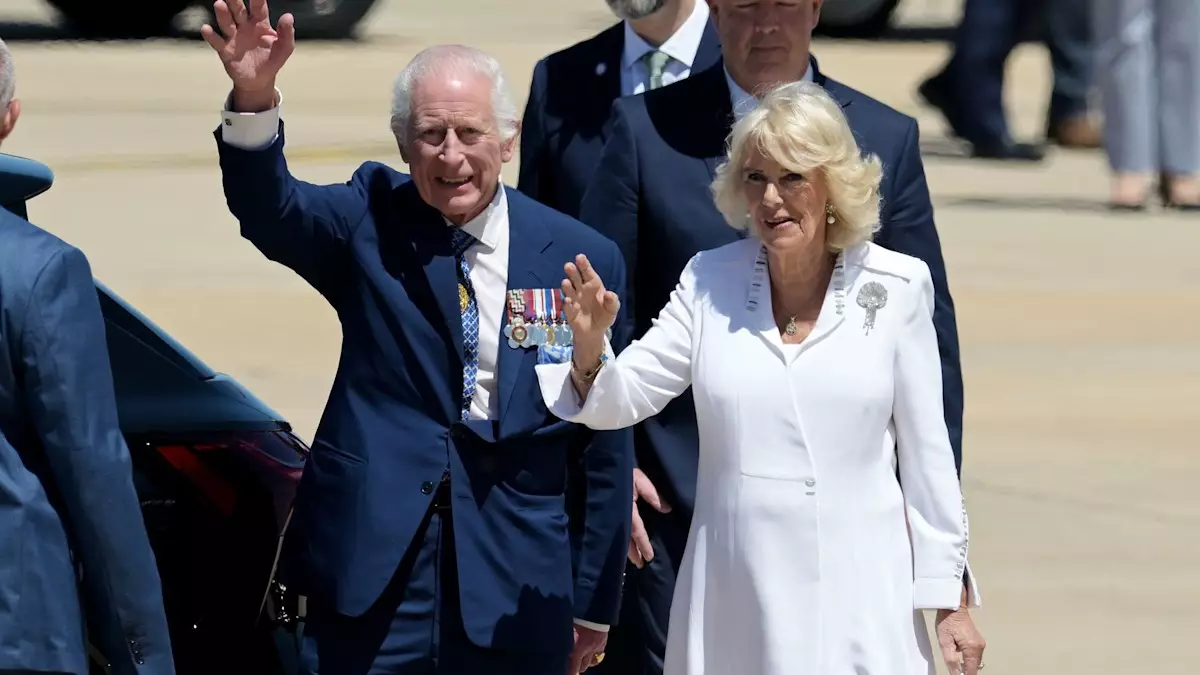When King Charles and Queen Camilla landed in Canberra on Monday, they were greeted with an impressive display of warmth and enthusiasm from the Australian public. This visit marks a significant moment, as it is their first trip to the nation’s capital in nearly ten years. For King Charles, it is not just another royal tour; it represents a unique occasion intertwined with personal significance and public affection. The royal couple radiated charm, with the Queen donning an elegant white silk crepe dress designed by Anna Valentine and accompanied by a poignant diamond and pearl brooch that belonged to the late Queen Elizabeth.
The visit symbolizes more than just a regality; it establishes a profound connection between the monarchy and the Australian people. King Charles, who has visited Australia 16 times, carries fond memories of his adolescent years spent studying in the country, intensifying the emotional weight of this latest journey. However, this occasion is also laced with poignancy, being the first major state engagement following Charles’s cancer diagnosis disclosed earlier this year.
As part of their official itinerary, Charles and Camilla visited the Australian War Memorial, where they paid their respects by laying flowers at the Tomb of the Unknown Australian Soldier. Their emotional return to this revered site, which they last visited in 2015, gathered considerable public interest. The gathering of onlookers offered a glimpse into the complexities of Australian identity, where a blend of republican sentiment and royal admiration surfaced in surprising ways.
A notable example was Georgia Bray, who, despite her republican views, admitted to feeling patriotic during the royal visit. Her sentiment captures an important aspect of the Australian experience—a nation proud of its independence yet willing to embrace historical ties with the monarchy in moments of national significance.
In vivid contrast, royal enthusiasts like Lynton Martin from Melbourne donned outfits festooned with Union Jacks, showcasing their unwavering support for the monarchy. Lynton’s excitement was palpable as he recounted his previous meeting with King Charles in Sydney, underscoring the blend of personal connection and communal celebration marked by the royal presence.
Following their visit to the memorial, the royal couple’s schedule included a formal engagement at the Australian Parliament. There, they were welcomed by high-ranking officials, including senior ministers and judiciary members. This formal acknowledgment reflects the ongoing relationship between the British monarchy and Australia, reinforcing Charles’s intent to foster diplomatic ties and goodwill.
A notable focus of King Charles’s visit is his long-held advocacy for environmental issues. At the National Bushfire Behaviour Research Laboratory, he observed a demonstration of the “pyrotron,” a sophisticated apparatus designed to simulate the effects of bushfires—an increasingly pressing crisis for Australia. This scientific insight not only reinforces his commitment to environmental stewardship but also provides a platform for public education on pressing ecological challenges.
Beginning their Australian tour in Sydney, the couple encountered hundreds of enthusiastic well-wishers after attending a church service. The buoyant reception served as a reminder of the enduring affection many Australians hold for the British royals. While some may lean towards republican sentiments, the crowds displayed a willingness to embrace royal visits as opportunities to celebrate shared history and cultural ties.
The couple’s itinerary is packed with further engagements in Sydney before continuing to Samoa, where they will participate in discussions with Commonwealth nations. For King Charles, this visit signifies a reaffirmation of his lifelong commitment to the causes he passionately supports, showcasing resilience in the face of personal health challenges.
In essence, this visit to Australia serves as a compelling narrative of royal duty interwoven with personal history, marking an emotional reconnection with a nation that remains pivotal to the Commonwealth. The community response, filled with mixed sentiments, highlights a nation navigating its identity while celebrating its history—a reflection that resonates deeply within the broader context of modern monarchy.

